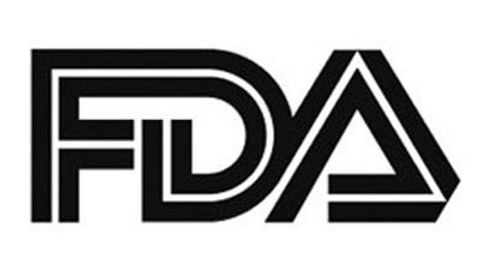FDA Halts Phase 1/2 Study of Emavusertib in Patients With Relapsed/Refractory AML
The phase 1/2 TakeAim Leukemia study exploring emavusertib in patients with acute myeloid leukemia and myelodysplastic syndrome has been halted by the FDA pending more safety and efficacy data.

The FDA has placed a partial clinical hold on the phase 1/2a TakeAim Leukemia study of emavusertib (CA-4948) given as monotherapy and in combination with azacytidine (Vidaza) and venetoclax (Venclexta) to patients with relapsed or refractory acute myeloid leukemia (R/R AML), according to a press release by Curis, Inc.1
Additional data from the study have been requested by the FDA in regards to the death of a patient who experienced rhabdomyoylsis in addition to several other conditions. This event was previously reported as a dose-limiting toxicity (DLT) of emavusertib. The FDA is also requesting safety, efficacy, and other data related to rhabdomyoylsis, and how Curis determined the recommended phase 2 dose (RP2D) of the agent in the study.
During the partial clinical hold, the study must halt enrollment of patients with AML, however those already enrolled and deriving benefit from emavusertib may continue treatment at the dose of up to 300 mg twice daily.
"We are committed to ensuring the safety of patients in our studies and to working collaboratively with the FDA to develop therapies that meaningfully improve and extend patients' lives," said James Dentzer, chief executive officer, Curis, Inc, in a statement "Given the clinical profile of emavusertib observed to date, we are hopeful that the study can be resumed soon, after appropriate review. We continue to be confident in the potential of emavusertib to address the high unmet need of patients with AML or [myelodysplastic syndrome]."
TakeAim Leukemia is a multicenter, open-label, phase 1/2a dose escalation and expansion study (NCT04278768). Patients with either R/R AML to high-risk myelodysplastic syndrome (MDS) will include 4 cohorts of patients. In 1 cohort, patients will be those diagnosed with FLT-ITD-mutant R/R AML who failed 1 to 3 pretreatments, including a FLT3 inhibitor. In another cohort, patients enrolled will be those with FLT3 wild-type R/R AML after failing 1 to 3 pretreatments. The first MDS cohort will include patients with R/R high-risk MDS with spliceosome mutations (SF3B1, U2AF1, SRSF2, ZRSR2), resistant or refractory to hypomethylating agents (HMA); who are ineligible for intensive chemotherapy and had a up to 3 pretreatments. Finally, the last cohort will include patients with R/R high-risk MDS without spliceosome mutations, who are resistant or refractory to HMA, ineligible for intensive chemotherapy, and had a maximum of 3 pretreatment.2
The phase 1 coprimary end points include determining the maximum-tolerated dose of emavusertib monotherapy, the RP2D of emavusertib, and the maximum tolerated dose (MTD) of emavusertib plus azacytidine.
The phase 2 coprimary end points include determining the RP2D of emavusertib plus azacytidine, the MTD of emavusertib plus venetoclax, the RP2D of emavusertib with venetoclax, complete response rate, duration of response, and safety determined by the frequency.
In phase 1 and 1b, the study will follow a 3 + 3 design. The 3 patients initially enrolled will be evaluated for dose-limiting toxicity during cycle 1 of treatment. If no DLTs are observed, the patients will proceed to the next higher dose level. In the vent of DLTs in the first 3 patients, the doe level may be expanded. Secondary end points of the study included pharmacokinetics and overall response rate.
In the phase 2a dose expansion portion of the study, investigators with follow a Simon-2 stage design with approximately 9 patients enrolled in each cohort. In the event of a response to treatment, 30 patients will be enrolled in each cohort.
The starting dose of emavusertib in the study is 200 mg twice daily (BID). In the dose-escalation phase, the agent will be administered for 28 consecutive cycles.Another experimental arm in the dose-escalation phase will consist of emavusertib 200 mg BID for 21 days of a 28-day cycle,combined with azacytidine 75 mg/m2 administered by intravenous or subcutaneous infusion. In the last dose-escalation cohort, patients who received emavusertib 200 mg for 21 days of a 28-day cyle in combination with venetoclax 100 mg orally for 21 days of a 28-day cycle.
In the dose expansion phase, patients will receive the RP2D determined from the phase 1 dose-escalation phase.
According to Curis, more guidance on the timing and discussion with the FDA around the rapid registrational path for emavusertib once the partial clinical hold is lifted. The hold has no bearing on the TakeAim Lymphoma study (NCT03328078), exploring treatment with emavusertib in patients with B-cell malignancies.1
REFERENCES:
1. Curis announces FDA partial clinical hold for takeaim leukemia study of emavusertib (CA-4948). News release. Curis, Inc. April 4, 2022. Accessed April 4, 2022.
https://bit.ly/3NLDhES
2. Dose escalation/ expansion trial of CA-4948 as monotherapy and in combination with azacitidine or venetoclax in patients with AML or MDS. Clinicaltrials.gov. Updated March 31, 2022. Accessed April 4, 2022. https://bit.ly/3DLS3ak